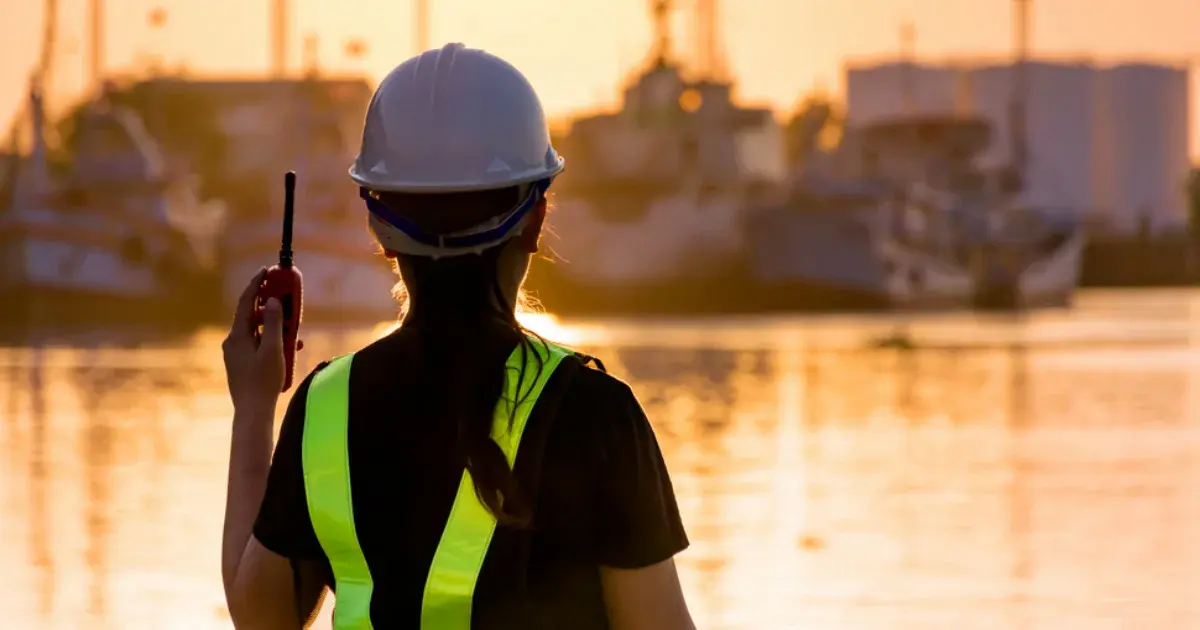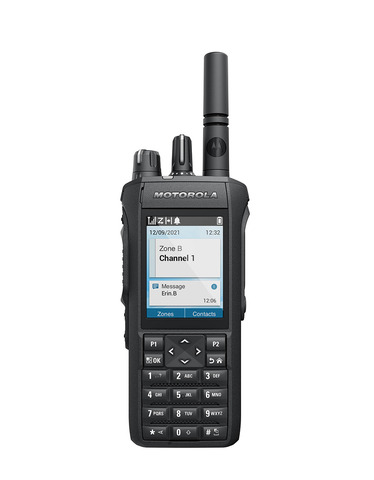Lone Worker Safety: Why Two-Way Radios Are Non-Negotiable

Lone workers are everywhere—a technician in a remote utility room, a guard alone at 2 AM, or a field worker driving for hours to fix equipment. They often work without direct supervision, in unpredictable conditions, and far from immediate help. When these workers face emergencies, every second between distress and response can mean the difference between a close call and a tragedy.
For lone workers, communication devices are more than tools—they’re lifelines. A dropped signal, or a delayed alert can cost critical minutes. While smartphones may seem adequate at first glance, they fall short where it counts.
They lack built-in safety features like man-down detection, GPS alerts, and emergency buttons, and they aren't built for rugged, high-risk environments. Professional two-way radio systems, by contrast, are made for critical moments—designed to perform under pressure and deliver immediate, reliable communication.
The Harsh Reality of Lone Worker Incidents
Delays in communication can quickly become life-threatening. For lone workers, the difference between a minor incident and a catastrophe often comes down to response time, which depends entirely on communication reliability.
Medical emergencies operate on unforgiving timelines. A fall, cardiac distress, or chemical exposure can become fatal in minutes without fast communication. Without immediate notification, remote teams may not begin response procedures until a missed check-in triggers concern—often hours too late.
Unlike smartphones that require multiple steps to place emergency calls, professional-grade radios offer immediate connection with a single press. This simplicity matters most when workers are under duress, injured, or experiencing reduced cognitive function.
5 Common Myths That Put Lone Workers at Risk
Dangerous misconceptions about communication technology continue to place isolated workers in jeopardy. Let's separate fact from fiction:
Myth 1: "Cell Phones Provide Adequate Coverage"
Cell coverage maps show ideal conditions, but real-life situations are different. In many places, like buildings with thick walls, basements, remote sites, or even busy city areas, cell signals often drop. Radios with Fleet Connect use networks designed for strong, reliable coverage. With the help of repeaters placed in key spots, workers stay connected even when cell phones can’t get a signal.
Myth 2: "Modern Smartphones Have All the Same Features"
Regular phones don’t have the safety features that two-way radios offer:
Emergency buttons that can be pressed while wearing gloves.
Automatic Man-down alerts that send a signal if a worker stops moving.
Tilt sensors that detect if someone has fallen or is in a strange position.
Timers that check in on lone workers and send alerts if there’s no response.
Rugged construction built to handle drops, dust, and harsh work conditions.
These aren’t luxury features. They’re basic safety tools for anyone working alone or in high-risk environments.
Myth 3: "Radio Systems are Outdated Technology"
Today's professional radio systems bear little resemblance to the simple walkie-talkies of decades past. Modern platforms integrate sophisticated safety features with digital clarity and advanced connectivity options.
The MOTOTRBO R7 combines crystal-clear audio that cuts through industrial noise with intelligent safety monitoring, allowing supervisors to track worker status without constant interruptions while providing instant access during emergencies.
Myth 4: "The Cost Isn't Justified for Occasional Use"
Some companies focus on the price tag and overlook the true cost of poor safety. But when you consider the full risk, professional two-way radios are one of the most cost-effective safety investments a company can make. Think of it like insurance—the cost may seem unnecessary until the moment it becomes critical.
For organizations with lone workers, these systems are more than communication tools. They’re part of a smart plan to reduce risk and meet your duty to keep workers safe.
Beyond Voice: Modern Safety Features That Save Lives
Today’s two-way radios do much more than let people talk. They also help monitor safety and respond during emergencies.
Intelligent Monitoring That Never Sleeps
Today’s two-way radios do more than send voice messages. They now act like personal safety devices that help monitor the worker and their surroundings. These features can help save lives:
Man-down detection sends an alert if the radio stays still for too long. This is key if someone falls or passes out.
Lone worker timers ask for regular check-ins. If a worker doesn’t respond, the system starts emergency steps automatically.
Location services send the worker’s exact position in an emergency—no need to press any buttons.
Here’s how it works in real life:
Scenario A (Cell Phone): A technician falls from a ladder in a basement room. Their phone is in their pocket. If they’re awake and can move, they might call for help. If not, they could lie there for hours before anyone notices.
Scenario B (Two-Way Radio): The same worker falls. The radio senses the impact and notices no movement. After a short wait, it sends an emergency signal with their exact location. Help is sent right away.
Integration With Broader Safety Systems
Today’s radio systems integrate seamlessly with broader safety tools. For example, they can link with dispatch software, alarm systems, and access controls—creating a layered response system that protects workers across every zone of the job site.
Companies can build custom safety steps around their radio systems. This includes setting up backup plans, covering hard-to-reach areas, and making sure workers can always get help when needed. With the right setup, radios provide clear communication and support across the entire operation—from the main office to the most remote locations.
Implementation: Creating a Culture of Safety
Effective lone worker protection requires more than just equipment—it demands thoughtful implementation and ongoing commitment.
Proper System Design
Every workplace is different, and so are its communication needs. Some areas have thick walls, underground rooms, or large outdoor spaces that can block signals. That’s why each facility needs a system built for its layout and risks. A smart setup includes:
- Checking for weak signal areas (dead zones)
- Placing antennas and equipment in the best spots
- Creating backup plans for high-risk zones
- Testing the system regularly in real work conditions
A one-size-fits-all system often leaves blind spots. To fix this, many sites use Distributed Antenna Systems (DAS) and repeaters to boost coverage. These tools extend radio signals into hard-to-reach zones—like basements, stairwells, and rooftops—so workers stay connected everywhere.
Clear Protocols and Training
Even the best equipment won’t help if people don’t know how to use it. Lone worker safety depends on clear steps, not just good tools. Every team should have simple, easy-to-follow procedures in place, such as:
- Clear emergency response plans
- Regular training on all safety features
- Scheduled check-ins during shifts
- Step-by-step instructions for what to do if something goes wrong
- Clear roles so everyone knows who’s responsible for what
Workers need to know how their radios work, but also when to use safety features and why they matter. Regular practice and safety drills help teams react quickly during real emergencies. When people are trained well, they don’t freeze under pressure—they act.
What to Look for When Choosing a System
Choosing the right system isn’t about the brand. It’s about whether it works under real conditions. Flashy features mean little if the system fails when it matters. Here’s what to prioritize when evaluating two-way radio systems for lone worker safety.
Reliable Coverage in All Working Zones
Coverage is the backbone of any communication system. Make sure the radios maintain strong, uninterrupted signals across every area where your team works. That includes stairwells, basements, rooftops, tunnels, and remote sites. If your facility has known dead zones, consider systems that support Distributed Antenna Systems (DAS) or repeater networks to eliminate coverage gaps.
Built-In Emergency Features
For lone worker scenarios, emergency functions aren’t optional—they’re essential. Look for systems that include:
One-touch emergency alerts
Man-down and tilt detection
Lone worker timers
Automatic GPS location transmission
Priority call interrupt
These features enable a swift response even when the worker can’t speak, move, or operate the device fully.
Ruggedness and Durability
Working environments can be unpredictable. Radios should be IP-rated for dust and water resistance, and able to withstand drops, temperature extremes, and vibration. Models like the R7 are specifically built for these conditions, ensuring safety isn’t compromised by physical failure.
System Scalability and Integration
Choose a system that can grow with your team. Whether you're running one site or managing teams in different areas, platforms like Fleet Connect offer wide-area communication that works with your dispatch tools and safety systems.
Buying the right system isn't just about meeting rules. It's about choosing a tool your workers can count on in critical moments.

Real-World Applications Across Industries
Professional two-way radios improve safety across many industries where people often work alone.
Healthcare Facilities: Maintenance staff in isolated rooms, night shift security, and workers in remote areas all rely on clear communication and built-in safety tools.
Utilities and Infrastructure: Field technicians working in remote locations or underground vaults stay connected through strong networks that work even when cell signals don’t.
Manufacturing: Workers in noisy plants use radios like the MOTOTRBO R2. Its special audio features help emergency messages get through, even in loud environments.
Transportation and Logistics: Drivers, warehouse staff, and yard workers need fast, reliable communication. Radios give them features that phone apps can’t match.
In every case, regular phones fall short. They don’t offer the safety features, signal strength, or tough design that professional radios provide.
A Safety Investment That Can’t Wait
Lone worker safety isn’t the place for compromise or “good enough” solutions. When someone works alone, whether in a remote field, a busy plant, or a locked facility after hours, their communication device becomes their first and sometimes only lifeline.
Smartphones are built for convenience. They don’t offer the safety features, speed, or durability that two-way radios provide. From emergency alerts and man-down detection to GPS tracking and priority calls, these systems are made to respond when it matters most.
Organizations that take safety seriously know this isn’t just about equipment. It’s about protecting lives. The right communication system doesn’t just keep your team connected. It helps bring them home.
Talk to us about building a safer communication solution for your lone workers.

